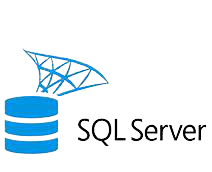Description
Duration: 5 days
This five-day instructor-led course teaches students how to use the enhancements and new features that have been added to SQL Server and the Microsoft data platform since the release of SQL Server 2008. The course focuses on teaching individuals how to use SQL Server 2014 product features and other Microsoft data platform components.
The primary audience for this course is database and business intelligence (BI) professionals who are familiar with SQL Server 2008 and want to update their skills to SQL Server 2014 and become familiar with related Microsoft data technologies.
Describe key features and capabilities of SQL Server 2014.
Leverage new and enhanced features to develop a database in SQL Server 2014.
Use in-memory database capabilities in SQL Server 2014.
Manage SQL Server 2014 by using dynamic management views and PowerShell.
Implement security in SQL Server 2014.
Implement high-availability and data recovery techniques in SQL Server 2014.
Use SQL Server 2014 Integration Services.
Use SQL Server 2014 Data Quality Services.
Use SQL Server 2014 Master Data Services.
Manage SQL Server 2012 Agent and Jobs.
Implement a tabular data model in SQL Server 2014 Analysis Services.
Implement a Self-Service BI solution with Microsoft Excel 2013.
Describe key elements of cloud solutions for data.
Implement a database in Microsoft Azure SQL Database.
Implement a SQL Server database in a Microsoft Azure virtual machine.
Implement a Big Data solution with Microsoft Azure HDInsight and the Microsoft Azure Marketplace.
Prerequisites
This course requires that you meet the following prerequisites:
Experience in building and managing database, data warehouse, and business intelligence (BI) solutions with SQL Server 2008.
Familiarity with the Windows Server 2012 operating system and networking.
Familiarity with Microsoft Excel and Microsoft SharePoint Server 2013.
What’s included?
- Authorized Courseware
- Intensive Hands on Skills Development with an Experienced Subject Matter Expert
- Hands-on practice on real Servers and extended lab support 1.800.482.3172
- Examination Vouchers & Onsite Certification Testing- (excluding Adobe and PMP Boot Camps)
- Academy Code of Honor: Test Pass Guarantee
- Optional: Package for Hotel Accommodations, Lunch and Transportation
With several convenient training delivery methods offered, The Academy makes getting the training you need easy. Whether you prefer to learn in a classroom or an online live learning virtual environment, training videos hosted online, and private group classes hosted at your site. We offer expert instruction to individuals, government agencies, non-profits, and corporations. Our live classes, on-sites, and online training videos all feature certified instructors who teach a detailed curriculum and share their expertise and insights with trainees. No matter how you prefer to receive the training, you can count on The Academy for an engaging and effective learning experience.
Methods
- Instructor Led (the best training format we offer)
- Live Online Classroom – Online Instructor Led
- Self-Paced Video
Speak to an Admissions Representative for complete details
| Start | Finish | Public Price | Public Enroll | Private Price | Private Enroll |
|---|---|---|---|---|---|
| 5/12/2025 | 5/16/2025 | ||||
| 6/2/2025 | 6/6/2025 | ||||
| 6/23/2025 | 6/27/2025 | ||||
| 7/14/2025 | 7/18/2025 | ||||
| 8/4/2025 | 8/8/2025 | ||||
| 8/25/2025 | 8/29/2025 | ||||
| 9/15/2025 | 9/19/2025 | ||||
| 10/6/2025 | 10/10/2025 | ||||
| 10/27/2025 | 10/31/2025 | ||||
| 11/17/2025 | 11/21/2025 | ||||
| 12/8/2025 | 12/12/2025 | ||||
| 12/29/2025 | 1/2/2026 |
Curriculum
Module 1: Introduction to SQL Server 2014:
This module introduces key features of SQL Server 2014.
Lessons
Overview of SQL Server 2014
SQL Server 2014 Editions and Components
Installing SQL Server 2014
Enhancements to SQL Server Management Studio
Lab: Exploring SQL Server 2014
Reviewing Installed Components
Using SQL Server Management Studio
After completing this module, you will be able to:
Describe common workloads for SQL Server 2014.
Describe the SQL Server 2014 Editions and Components.
Install SQL Server 2014 Components.
Use new features in SQL Server Management Studio.
Module 2: What’s New in SQL Server Database Development
*This module describes enhancements to Transact-SQL and other database development features since SQL Server 2008.
Lessons
Transact-SQL Enhancements
New and Enhanced Transact-SQL Functions
Enhancements to Spatial Data Support
Storing and Querying Documents with SQL Server 2014
Lab: Developing SQL Server 2014 Databases
Using Sequence Objects
Using the THROW statement
Implementing Paging
Querying Documents
After completing this module, you will be able to:
Describe enhancements to Transact-SQL.
Describe new and enhanced Transact-SQL functions.
Describe Enhancements to Spatial Data Support.
Explain how to store and query documents with SQL Server 2014.
Module 3: In-Memory Database Capabilities
This module describes how SQL server 2014 enables you to leverage in-memory technologies to enhance database performance.
Lessons
The Buffer pool Extension
Columnstore Indexes
Memory-Optimized Tables
Lab: Using In-Memory Database Capabilities
Enabling the Buffer Pool Extension
Creating Columnstore Indexes
Working with Memory-Optimized Tables
After completing this module, you will be able to:
Use the Buffer Pool Extension to improve performance for read-heavy OLTP workloads.
Use Columnstore Indexes to improve performance in data warehouse query workloads.
Use memory-optimized tables to improve performance for latch-bound workloads.
Module 4: Scripting SQL Server 2014
This lesson describes how you can use dynamic management views and PowerShell to script administrative tasks in SQL server 2014.
Lessons
New and Enhanced Dynamic Management Views
Using PowerShell to Manage SQL Server
Lab: Managing SQL Server with Scripts
Using Dynamic Management Views
Using PowerShell
After completing this module, you will be able to:
Describe new and enhanced dynamic management views.
Describe how to use PowerShell to Manage SQL Server.
Module 5: Implementing Security in Microsoft SQL Server 2014
This module describes the enhancements to security features since SQL Server 2008.
Lessons
Security Management Enhancements
Contained Databases
Lab: Implementing Security
Implementing User-Defines Server Roles
Implementing Contained Databases
After completing this module, you will be able to:
Describe the security enhancements in SQL Server 2014.
Explain how to use contained databases.
Module 6: High Availability and Data Recovery Enhancements
This module describes enhancements to SQL Server availability and data recovery features since SQL Server 2008.
Lessons
AlwaysOn High Availability
Enhancements to Data Recovery
Lab: Using AlwaysOn Availability Groups
Creating an AlwaysOn Availability Group
Using an AlwaysOn Availability Group
Observing Availability Group Failover Behavior
After completing this module, you will be able to:
Describe high availability features in SQL Server 2014.
Describe data recovery enhancements in SQL Server 2014.
Module 7: New and Enhanced Features in SQL Server Integration Services
This module describes enhancements to SQL Server Integration Services since SQL Server 2008.
Lessons
Using the CDC Control Task for Incremental Data Loads
Deploying and Operating SSIS Packages
Lab: Using SQL Server Integration Services
Extracting Modified Data
Deploying and Operating an SSIS Project
After completing this module, you will be able to:
Use the CDC Control task to perform incremental data extractions in an ETL solution.
Deploy and operate an SSIS project.
Module 8: Data Quality Services
This module explains how to use the SQL Server 2014 Data Quality Services (DQS) to provide a computer-assisted process for cleansing data values and identifying and removing duplicate data entities.
Lessons
Introduction to Data Quality
Using Data Quality Services to Cleanse Data
Using Data Quality Services to Match Data
Lab: Cleansing Data
Creating a DQS Knowledge Base
Using a DQS Project to Cleanse Data
Using DQS in an SSIS Package
Lab: Deduplicating Data
Creating a Matching Policy
Using a DQS Project to Match Data
After completing this module, you will be able to:
Describe how Data Quality Services can help you manage data quality.
Use Data Quality Services to cleanse your data.
Use Data Quality Services to match data.
Module 9: Master Data Services
This module introduces Master Data Services and describes its key configuration options and how to import and export data.
Lessons
Introduction to Master Data Services
Implementing a Master Data Services Model
Using the Master Data Services Add-in for Excel
Lab: Implementing Master Data Services
Creating a Basic Model
Editing a Model by Using the Master Data Services Add-in for Excel
Loading Data into a Model
Enforcing Business Rules
Consuming Master Data Services Data
After completing this module, you will be able to:
Describe key Master Data Services concepts.
Implement a Master Data Services model.
Use Master Data Services tools to manage master data.
Use Master Data Services tools to create a master data hub.
Module 10: SQL Server 2014 Reporting Services
This module describes new and enhanced features in SQL Server Reporting Services.
Lessons
Reporting Services Overview
Reporting Services and Microsoft SharePoint Server
Introduction to Data Alerts
Lab: Using SQL Server 2014 Reporting Services
Viewing SharePoint Mode Configuration
Authoring, Publishing, and Viewing a Report
Creating and Managing Data Alerts
After completing this module, you will be able to:
Describe the key capabilities of Reporting Services.
Install and configure Reporting Services in SharePoint Mode.
Use data alerts to notify users of changes to report data.
Module 11: Implementing an Analysis Services Tabular Data Model
This module describes Analysis Services tabular data models and explains how to develop a tabular data model by using the SQL Server Data Tools for BI add-in for Visual Studio.
Lessons
Introduction to Analysis Services Tabular Data Model Projects
Creating a Tabular Model
Using an Analysis Services Tabular Data Model in the Enterprise
Lab: Working with an Analysis Services Tabular Data Model
Creating an Analysis Services Tabular Data Model Project
Configuring Columns and Relationships
Using Custom DAX Expressions
Deploying an Analysis Services Tabular Data Model
After completing this module, you will be able to:
Describe Analysis Services tabular data model projects.
Implement an Analysis Services tabular data model.
Use an Analysis Services tabular data model.
Module 12: Self-Service BI with Microsoft Excel
This module introduces the self-service BI capabilities that can be delivered through Microsoft Excel 2013 and related technologies.
Lessons
PowerPivot for Excel
PowerPivot for SharePoint Server
Power Query
Power View
Power Map
Collaborative Analysis with Power BI for Office 365
Lab: Self-Service BI with Excel*
Creating a Data Model with PowerPivot
Importing Data with Power Query
Visualizing Data with Power View
Visualizing Geographic Data with Power Map
After completing this module, you will be able to:
Use PowerPivot to create tabular data models in Excel.
Share PowerPivot workbooks in SharePoint Server.
Use the Power Query to discover and import data from multiple data sources into Excel.
Use Power View to create interactive data visualizations in Excel and SharePoint Server.
Use the Power Map to create visualizations of geographic data.
Use Power BI for Office 365 to create a cloud-based collaborative solution for self-service BI.
Module 13: Introduction to Cloud Data Solutions
This module introduces some of the key Microsoft technologies that you can use to implement a cloud solution for data.
Lessons
Overview of Cloud Computing
Microsoft Azure Services for Data
Lab: Using Microsoft Azure
Creating a Microsoft Azure Storage Account
Backing Up a Database to Microsoft Azure
Storing Data Files in Microsoft Azure
After completing this module, you will be able to:
Describe key features and benefits of cloud computing.
Describe Microsoft Azure service for data.
Module 14: Microsoft Azure SQL Database
This module introduces Microsoft Azure SQL Database, a Platform-as-a-Service (PaaS) solution for cloud-based relational database storage.
Lessons
Introduction to Microsoft Azure SQL Database
Microsoft Azure SQL Database Security
Implementing and Managing Databases
Lab: Using Microsoft Azure SQL Database
Provisioning Microsoft Azure SQL Database
Configuring Microsoft Azure SQL Database Security
Migrating a SQL Server Database to Microsoft Azure SQL Database
After completing this module, you will be able to:
Describe key features and benefits of Microsoft Azure SQL Database.
Implement security for Microsoft Azure SQL Database.
Implement and manage databases in Microsoft Azure SQL Database.
Module 15: SQL Server in Microsoft Azure Virtual Machines
This module explores how you can use Microsoft Azure virtual machines in which SQL Server is installed to create a cloud-based solution for data.
Lessons
Introduction to Microsoft Azure Virtual Machines
Microsoft Azure Virtual Machine Connectivity and Security
Creating Databases in a Microsoft Azure Virtual Machine
Lab: Using Microsoft Azure Virtual Machines
Creating a Microsoft Azure Virtual Machine
Configuring Virtual Machine Security and Connectivity
Creating Databases on a Virtual Machine
After completing this module, you will be able to:
Describe considerations for using Virtual Machines in Microsoft Azure.
Create and configure Microsoft Azure virtual machines.
Create databases in Microsoft Azure virtual machines.
Module 16: Implementing Big Data Solutions
This module describes the main features of big data and the Microsoft technologies that you can use to build big data analytical solutions. In particular, the module focuses on Microsoft Azure *HDInsight and the Microsoft Azure Marketplace as core elements of the Microsoft solution for big data.
Lessons
Introduction to Big Data
Microsoft Azure HDInsight
Consuming HDInsight Results in Excel
Obtaining Data from the Microsoft Azure Marketplace
Lab: Creating a Big Data Solution
Provisioning an HDInsight Cluster
Processing Data with HDInsight
Analyzing Big Data in Excel
Obtaining Data from the Microsoft Azure Marketplace
After completing this module, you will be able to:
Describe key features of big data.
Process big data with Microsoft Azure HDInsight.
Consume big data processing results from Microsoft Azure HDInsight in Microsoft Excel.


